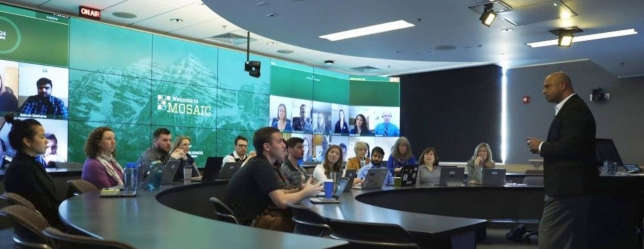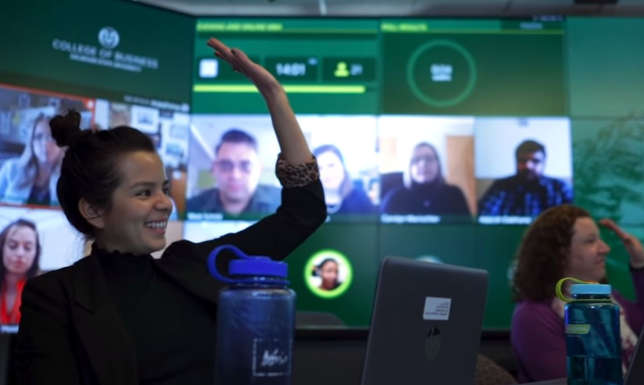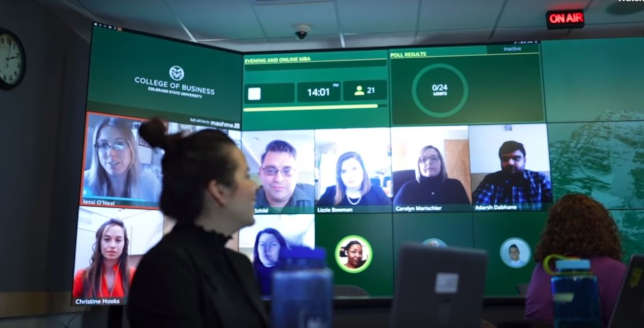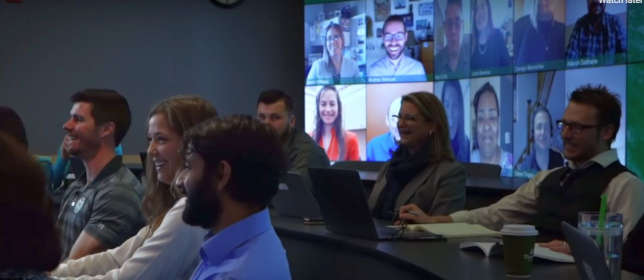Colorado State Pilot Tests Connecting Remote and In-Class Students
- By Dian Schaffhauser
- 04/18/19

Colorado State University's College of Business has set up a pilot for what it calls a first for a business school: a blended classroom that connects on-campus and remote students in real time. The approach uses technology from mashme.io for live connectivity and collaboration.
"Mosaic," as it has been branded by the college, serves as a replacement for its traditional lecture-capture approach. The physical infrastructure exists on campus in one classroom and uses 27 tiled displays to show course content and the faces of remote students. Those student tiles can display between one and four people each, accommodating up to 88 possible virtual seats for online students. The system allows the students to rotate in and out or occupy an "assigned virtual seat," where an individual resides in the same title for the duration of the course.

During lectures, Mosaic enables simultaneous interactions through polls, group discussions and other engagement tools. Students can raise their hands and ask questions in real time, work with faculty and facilitate group work, whether they're present in person or from a distance.
Remote students use Mosaic via Google Chrome from a desktop, laptop or tablet computer. On their end, they need a microphone and webcam and an internet connection. (An Ethernet cable is recommended but Wi-Fi works too, according to the university.) Third-party software such as Google's G-suite integrates without the need for plugins or downloads.

The online experience is similar to participating in a web conference. Students link into the class through a broadband connection and use a dashboard of options to raise their hands and toggle the microphone and video buttons.
The college is piloting Mosaic this year in graduate courses. It anticipates adding Mosaic to other business courses in 2020 and is looking at the possibility of extending access to the broader university community.

"[Mosaic] gives virtual students the same personal attention from faculty as those sitting in the class," said Sanjay Ramchander, a senior associate dean for academic programs who has worked in the space.
"We are in the business of transforming lives, and Mosaic helps us continue that tradition," added CSU College of Business Dean Beth Walker. "Online students can collaborate, share ideas and move concepts forward in real time. That's the true power of Mosaic -- its ability to create connection and deepen learning for students from all walks of life."
About the Author
Dian Schaffhauser is a former senior contributing editor for 1105 Media's education publications THE Journal, Campus Technology and Spaces4Learning.